In Australia’s current national security debate, Australians needs to get perspective.
Islamism is a threat to the safety of Australians. Fact. Islamism is becoming a threat to Australian culture, values and way of life. Islam’s professed goal is world domination through conversion or bloodshed. It is ideological, a lifestyle choice albeit dogmatic and backward. It is sectarian, typically extremist, rather organic in a migratory sense, and so spasmodic if not chaotic.
In Australia in 2015, there are an estimated half a million Muslims concentrated mainly in western Sydney, northern and south-east Melbourne. There are about 350 mosques in Australia, plus an estimated further two hundred Islamic centres (pseudo-Mosques).
Islam is a growing social menace in urban Australia and muzzies have demonstrated themselves to be a growing dangerous criminal peste. It is a political movement supported by Leftist-Anarchists selfishly to undermine Australian cultural values and to undermine Australian national sovereignty.
 Rags, beards, AKs and falafels. Whatever!
Rags, beards, AKs and falafels. Whatever!
Globally, there are 1.9 billion Muslims running around, but the problem is mainly on the other side of the planet. Long term, Islam looks to be a serious threat to Australia, as it is currently infecting Europe and the US.
But Chinese Imperialism is Australia’s most immediate national security threat. Islam is a social menace like an Ebola outbreak, whereas Chinese Imperialism is like Aussies succumbing to dynastic serfdom.
Chinese Imperialism too is about world domination, but with less testosterone and the Chinese junta are more sly about it. Chinese Imperialism is not about an ideology to which many races can follow, but about the Chinese race spreading its massive population as one superior controlling race over other races.
Anyone can become a muzzie, but under Chinese Imperialism, if you are not Chinese, then you must be subordinate to the power end game.
It is about the totalitarian state of China extending rule or authority over sovereign nations like Australia, acquiring ownership and control of national assets, property, resources.
Chinese Imperialism is about building in nations their economic dependency on China. Chinese Imperialism is the expressed design of the global superpower in our region. Unlike Islamism, Chinese Imperialism is national to the Chinese race. It is pragmatic calmly calculating, strategic, centralised, massively over-resourced and is being systematically implemented by a superpower with absolute control and resolve.
Chinese Imperialism has runs on the board in Australia well above and beyond Islam. Chinese Imperialism threatens the very survival of Australian sovereignty. Chinese Imperialism is a mixture of economic takeover, colonization and political infiltration all leading to a future ‘ethnic cleansing’ that will secure the continent for the new superpower.
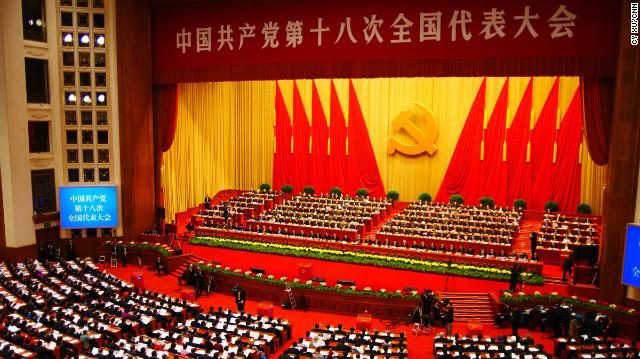 The Communist Party of the Peoples Republic of China is a tad more organised than a few nutjob jihadis
The Communist Party of the Peoples Republic of China is a tad more organised than a few nutjob jihadis
Chinese Imperialism has already started taking control of Australia – our wealth, property, resources, institutions, government, our national independence, our sovereignty.
Chinese number 1.3 billion globally, yet they number a million in Australia (double the number of Muslims here). Chinese residents inhabit mainly urban Sydney, Melbourne and Brisbane, and are arriving in Australia at the rate of 100,000 a year – a third as migrants, two-thirds on student visas who end up staying.
But the Chinese state owns and controls vast swathes of Australian agriculture, real estate, resources, industry, energy, capital, wealth. Jihadis know how to behead infidels.
Those who believe that Chinese economic investment abroad is unconnected with PRC strategic aspirations need only look at the sorts of major infrastructure investments that Chinese firms have made in Australia:
- Chinese own 4% of Australian investment capital and 1% of the land area of Australia
- China’s ownership value of Australian assets is about $9.5 billion (outbound direct investment)
- Australia’s economy is hogtied to China with 27% of our exports and 15% of our imports dependent upon China’s economy
- China Merchants’ century-long lease of the port of Newcastle (proximate to RAAF Base Williamtown)
- Landbridge’s century-long lease of the port of Darwin (proximate to RAAF Base Darwin, HMAS Coonawarra and to Larrakeyah Barracks)
- The new links between Qinzhou and the port of Townsville (proximate to RAAF Base Townsville)
- A China-connected firm buying the plot of land next to ASIO headquarters in Canberra.
- In 2012, the Chinese military stole the blueprints to ASIO headquarters including the floor plans and the locations of communications cabling, servers and security systems.
- Chinese cyber spies have stolen top-secret technical specifications to Australia’s new Joint Strike Fighter (JSF) (“many terabytes of data”).
- China holds $130 billion of the $730 billion Australian Government and quasi-government bonds in the market.
- China holds a third of the $400 billion worth of the Australian Government’s Commonwealth Government Securities, semi-government bonds and sub-sovereign bonds held offshore.
- Chinese military cyber attacked and infected Australia’s Bureau of Meteorology supercomputer with links to ADF. It is now compromised and only a complete system rebuild costing hundreds will remove the infection.
- China’s State Grid is set to buy $9 billion electricity infrastructure controlling New South Wales and Canberra.
A key reason why Chinese Imperialism poses more of a national security threat to Australia than does Islam, is because both Liberal and Labor Parties in Australia, while tacitly recognising Islam could be linked to jihadis, refuse to speak of China as a threat. They are jointly corrupted by the yuan and its economic benefits and lure. China can steal Australia’s secrets, hack Australia’s computers, control our critical infrastructure, yet Labor and Liberal are silent because they are corrupted by the Yuan.
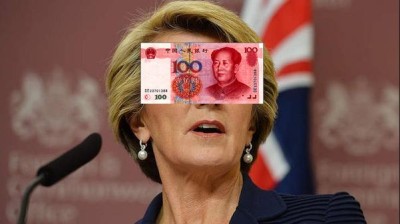 Yuan billions from China jointly blinds Liberals and Labor to treacherous sellout of Australian wealth
Yuan billions from China jointly blinds Liberals and Labor to treacherous sellout of Australian wealth
“The greatest victory is that which requires no battle.”
“The supreme art of war is to subdue the enemy without fighting.”
China’s national revival and its global economic and strategic extension over the decades since Deng Xiaoping, which Xi Jinping has rebranded as the “Chinese Dream”.
This dynastic “Chinese Dream” involves the reassertion of the economic and political primacy of China globally, just like its previous ancient attempts.
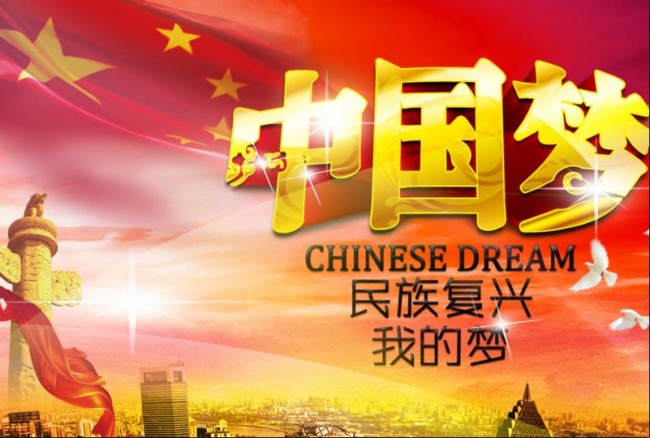
Containing China’s expansionism is vital. The Chinese military have invaded Tibet, the Turkic Uyghur of Xinjiang (not part of China), the Philippines’ Spratly Islands in the South China Sea, the Japanese Senkaku Islands, and China continues to lay claim to Taiwan. Chinese influence and control extends across resource-rich sub-Saharan Africa and has tentacles in many South Pacific island nations dressed up as ‘economic aid’.
Remnants of Mao’s Red China survives today only in its totalitarianism. The Peoples Republic of China (PRC) is now fully capitalist and expansionist. President Xi Jinping is reinvigorating China’s traditional ‘Silk Road’ imperialism stemming from the ancient Han and Tang dynasties. It is not just about China’s security complex about food and energy supply, or about exploiting trade opportunities. It is fundamentally about control – controlling the people, territory, resources, infrastructure, finance, commerce, markets, sea routes, skies, food production, technology, intellectual property, military power, you name it.
 The Yellow Peril has not changed over dynasties
The Yellow Peril has not changed over dynasties
It is pure imperialism and it involves subjugation. It is a long-term strategy of the Communist Party of China.
Throughout the Asian-Pacific region, China is attempting to establish economic connectors through the 21st Century Maritime Silk Route and the Silk Road Economic Belt, the $100 billion Asian Infrastructure Investment Bank, the $40 billion Silk Road fund, the internationalisation of the renminbi, the shifting of its industrial production offshore and the various free trade agreements it has entered into.
Hundreds of billions of dollars in Chinese funds are being invested abroad as the PRC economy and national power expand. Infrastructural investment and control over that infrastructure are key in extending Chinese power across the Asian-Pacific region.
A vast range of PRC state-owned (and state-linked) enterprises are busy developing their control over infrastructure throughout South-East Asia – funding ports, power generators, energy transmission networks, highways, dams, railways and airports. China already completely dominates the infrastructure sphere and thus the economies of Laos and Cambodia, and Malaysia is swiftly following into that camp. This economic control is a precursor and necessary condition for strategic domination of the region.
Ports are extremely important in this pursuit of regional domination. China has been making great efforts to develop and control Sri Lanka’s Hambantota Port and Pakistan’s Gwadar Port to the chagrin of India and is pushing to develop the port of Djibouti in Africa. Within Bangladesh a Chinese “special economic zone” and port are being developed in Anwara, Chittagong. In Myanmar, China has invested in a deep-sea port on Maday Island at Kyaukphyu, to facilitate a $2.5 billion pipeline transporting oil and gas to China’s Yunnan province.
In other parts of South-East Asia, China is also seeking to dominate ports as well as shipping between ports, with Laem Chabang in Thailand, Sihanoukville in Cambodia, Batam in Indonesia and Kuala Tanjung in Northern Sumatra marked for key development. Most recently a “port alliance” has been announced between 10 Chinese ports and five Malaysian ports. The “sister port” tie ups with Kuantan, Melaka, Kedah and Port Klang in Malaysia are readying further nodes in China’s ‘New Silk Road‘ network.
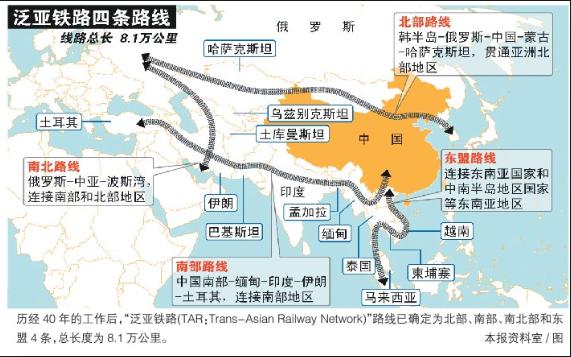
China is also buying up Australia – our farms, our natural resources (ores, coal, oil, minerals, water, gas), our energy generation, our industry, our markets and companies, our real estate, our jobs.
Australia is the natural extension of this agenda and Darwin is intended to be a crucial link in China’s new 21st Century Maritime Silk Road. The Darwin deal will provide Chinese shipping and naval vessels with facilitated access to Australia, the Indian Ocean and the South Pacific, as well as to Indonesia and PNG over the coming century.
The great threat of Chinese Imperialism is dismissed by the political time-servers and the media as xenophobia. What naive fools!
The Liberal and Labor parties play down Australians’ intuitive concerns, spinning the myth that it is not ownership, but foreign investment vital for economic growth. Bullshit! It is foreign state control!
The ASIO political police who investigate patriots as much as Islamists suggest that “nationalists” waging campaigns against this foreign takeover undermine state interests!
ASIO in their new $630 million Ben Chifley Building are tasked with going after the political expedient and small fry – foreign crims and jihadis, else distracted by monitoring Australian patriots and nationalists. Meanwhile, Australia’s critical assets, sovereignty and security is being compromised by Chinese Imperialism.
ASIO’s success at preventing Chinese Imperialist acquisition, control, infiltration, attacks? Zero!
ASIO even turns a political Yuan blind eye to Chinese spies operating in Australia, granted visas to roam and intimidate CCP official expats hiding in Australia. No wonder Duncan Lewis has become a politician: “If the money’s right Malcolm…”

Chinese control of the port of Darwin marks just the beginning – the so-called “dragonhead” – of PRC economic domination of northern Australia. The aggressive PRC pursuit of Australian infrastructure in all spheres from ports to power networks to railways, clearly reflecting the strategic imperatives of the Chinese state, is matched in degree only by the almost parodic offering to the PRC’s National Development and Reform Commission of lists of key infrastructure projects in which they might like to invest and subsequently control.
While the achievement of PRC economic primacy and control in Australia will be a gradual process, Northern Australia will be essential in the exercise and ChAFTA will be the merciless facilitator. This economic domination will subsequently and inevitably translate into PRC strategic influence over the country. The ultimate goal will be the severing of the US-Australia alliance, an end long pursued by China, as part of the PRC’s intended strategic domination of the Western Pacific.
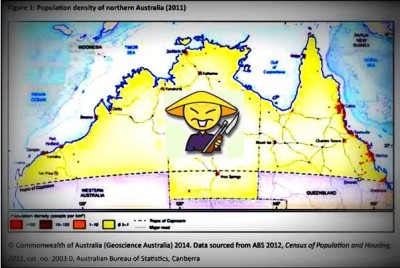
Those who believe that Chinese economic investment abroad is unconnected with PRC strategic aspirations need only look at the sorts of major infrastructure investments that Chinese firms have made in Australia – China Merchants’ century-long lease of the port of Newcastle (proximate to RAAF Base Williamtown), Landbridge’s century-long lease of the port of Darwin (proximate to RAAF Base Darwin, HMAS Coonawarra and to Larrakeyah Barracks), the new links between Qinzhou and the port of Townsville (proximate to RAAF Base Townsville), and a China-connected firm buying the plot of land next to ASIO headquarters in Canberra.
In addition, we have SOE State Grid controlling Australian energy networks and hoping to gain control of NSW electricity network assets which also carry top-secret ADF communications. Next on the PRC acquisition list will likely be the port of Fremantle (proximate to RAAF Base Pearce and HMAS Stirling). China’s accessing of CYBINT, SIGINT and HUMINT intelligence through these new access points would present ongoing security concerns for Australia.
Every single investment by PRC state-linked companies has a strategic significance and we ignore this at our peril. For all of these reasons there must be great security concerns about the Darwin deal and of our almost unquestioned acceptance of PRC state-linked investment.
The energy expended in denouncing critics of the Darwin deal as xenophobes might be better utilised in trying to understand the global agenda of the autocratic state that is the PRC and Australia’s intended role within this.
“The expansion of Chinese influence in the South Pacific reflects more than a benign attempt to gain access to the region’s abundant minerals, timber and fisheries.
Strategic issues often have economic faces. Rising Chinese activity in the region has a broader twofold purpose: to sideline Taiwan and to undermine ties between Pacific island nations and regional powers such as the United States, Australia and Japan.
It should be seen as part of a longer-term political and strategic investment aimed at challenging the leadership of the United States in the greater Asia Pacific region.”
(Susan Windybank, ‘The China Syndrome’, 2005)
In February 2014, three Chinese warships on a military exercise that included combat simulations sailed through the Sunda Strait, turned east, passed by Christmas Island before skirting the southern edge of Java and turning north again. Never before has a Chinese naval drill come so close to Australia.
The Chinese ships took Australian officials by surprise. China had not announced the route of the exercise, nor informed Canberra. Rather, Australian defence officials were reportedly alerted by their American counterparts. There was sufficient consternation that Defence ordered a P-3 Orion surveillance plane north to keep an eye on the warships.
Military planners and strategic analysts have long known that China’s naval ambitions were growing, with far-reaching strategic consequences for our region. This month’s exercise took the theory a good step closer to reality, bringing China’s bold ambitions virtually to Australia’s doorstep.
China’s military budget is expected to be as much as $200 billion this year.

As a giant economy and a totalitarian power, China asserts its right to expand its military. Neither the US nor Australia denies this right. Asked about the significance of the Chinese navy exercises on Friday, Foreign Minister Julie Bishop told the ABC that China’s growing power in the region and around the globe needed to be acknowledged.
“The United States has long been the single greatest power in the Pacific, in Asia, in fact globally,” she said. ”But we recognise that there are other countries that are emerging as stronger economies, other countries are building up their militaries. Japan is also redefining its defence stance.
”So we are in a very different world. It’s a changing landscape and our foreign policy must be flexible enough and nimble enough to recognise that changing landscape.”
Naive fool!
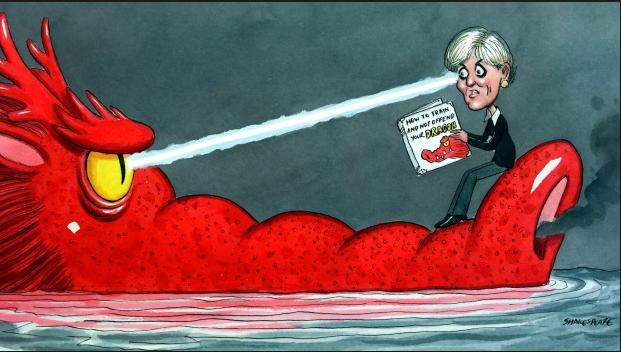 Not Julie Bishop’s notorious death stare, but China’s dragonhead applying ‘soul extraction‘
Not Julie Bishop’s notorious death stare, but China’s dragonhead applying ‘soul extraction‘
Last June, in the face of tensions with Tokyo, Chinese warships sailed all the away around Japan, to show they could go where they liked.
In October, a large contingent of Chinese ships converged in the western Pacific to show they could breach the so-called ”first island chain” that has traditionally formed a notional maritime boundary. In December, China’s first aircraft carrier held exercises in the South China Sea. One of its escort ships nearly collided with an American destroyer.
China’s growing interests far from home give it a good reason for extending its naval power, notably into the Indian Ocean.
There are more than 1 million Chinese nationals living in Africa and substantial Chinese economic interests in the Middle East. China depends heavily on oil imports from the Persian Gulf that are transported through the Indian Ocean and on through the busy Malacca Strait which ends at Singapore.
Indonesia’s Lombok Strait, through which the three Chinese warships passed on their recent exercise above Australia, is a possible emergency alternative route to the Malacca Strait, which could be blockaded in the event of a war in Asia. If the territorial disputes in the East China Sea or South China Sea did spark a war, China’s energy supplies could be better safeguarded.
”Fifteen years ago, China had very little capacity to find and sink American aircraft carriers. Now it can.
Meanwhile, Australia’s naval frigates HMAS Stuart and HMAS Arunta in November 2015 visited the Chinese port of Zhanjiang and trained with the Chinese navy in the South China Sea, as an American guided missile destroyer challenged sea lane access rights near the Spratly Islands.
Chinese Imperialism claims not only the Spratlys but 80 percent of the South China Sea.
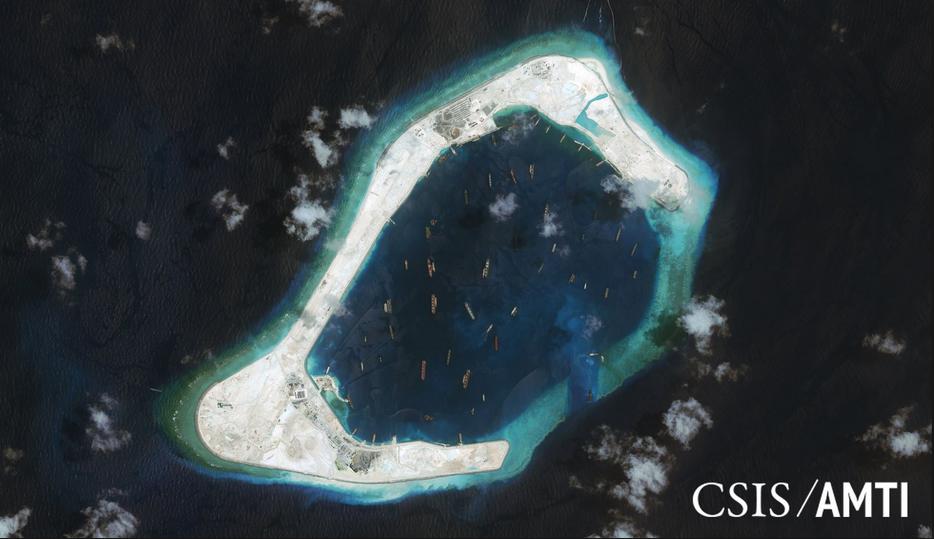 SCREAM ISLAND: Chinese Imperialism has created 7 strategic military Diego Garcia atolls like this one, just 230 nautical miles off the coast of the Philippines, yet 1000 nm from mainland China.
SCREAM ISLAND: Chinese Imperialism has created 7 strategic military Diego Garcia atolls like this one, just 230 nautical miles off the coast of the Philippines, yet 1000 nm from mainland China.
Australia’s Liberal Party Foreign Minister Julie Bishop said “We have joint exercises with the United States navy, we have joint exercises with the Chinese navy so we will continue to operate in that region.”
In October 2015, Australia’s Army shared training land-based tactics with the Chinese military in the Top End during “Exercise Kowari”, revealling al the local knowledge and survival techniques to survive in the harsh environment of northern Australia when the time comes for the Chinese to invade us.
At the time, then Liberal Party Foreign Minister David Johnston said, “The exercise will provide those taking part with an understanding of the basic principles, procedures, techniques and equipment that best support survival in a harsh environment…to enhance “mutual trust and regional stability.”
 Australian, US and Chinese pillow talk in Darwin
Australian, US and Chinese pillow talk in Darwin
Then the fat cat pollies flew back to Canberra and entertained Chinese General Fan and other senior Chinese military officials to Yum Cha, a stroll around the art gallery and probably a thrown in internal tour of ASIO’s Ben Chifley Building down the road.
In Australia First Party’s forthcoming The True Cause Of Australian Independence, our Party writers will look at securing Australia from China and other dangers.
